Tapping into the interconnected mycological web beneath our feet lets us make allies of the myriad fungi in our gardens.
Not many books – a mere third of the way through reading them – have me dashing excitedly out into my garden. But that’s exactly the effect that Finding the Mother Tree: Uncovering the Wisdom and Intelligence of the Forest, by Suzanne Simard, is having.

Simard is Professor of Forest Ecology at the University of British Columbia. Her book is about her lifetime spent studying – via scientific rigour – how trees co-operate and heal, how they share their memories and wisdom, and how they possess sentience: they feel stuff. I’m a fan. Simard found that they achieve much of this using an immense, interconnected web of underground fungal mycelium that’s been aptly and exquisitely coined elsewhere as ‘earth’s internet’.
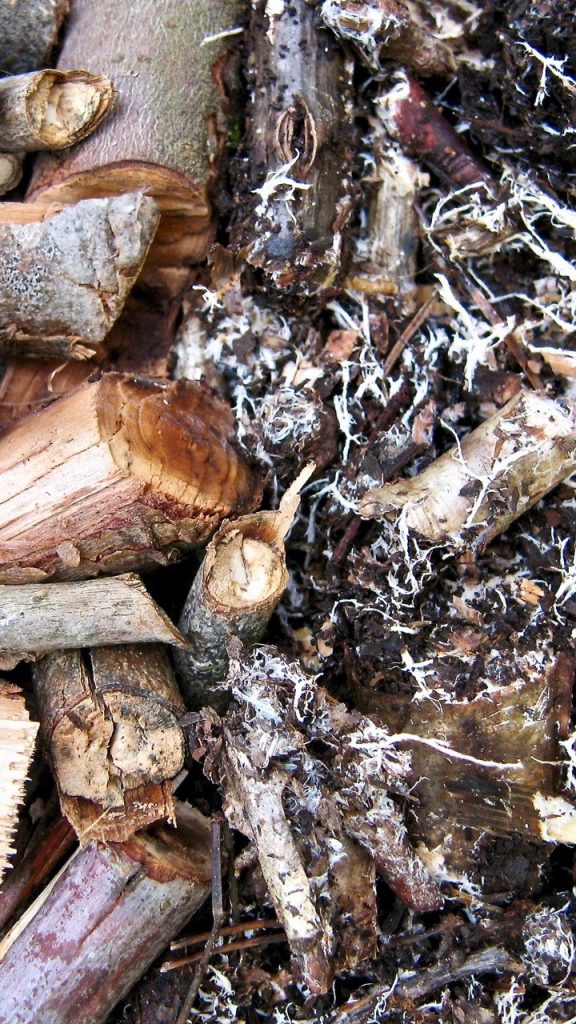
Ever since I began experimenting with green wood chips (or chipped/ramial branch wood) to help build and enrich the soil in my veganic (vegan + organic) no-dig beds several years ago, I’ve been enthralled by observing the role that different fungi, quietly busying away below ground, now play in the overall health and well-being of my evolving garden and its plants. The wisdom of dusty lessons learned in my horticultural youth were that fungi, bar the edible ones, were essentially a gardener’s enemy, a blight, a problem to be solved – usually with a chemical spray.
Those days are long gone; these days, I wait as excitedly for sudden, unexpected overnight flushes of toadstools around the base of my ‘Bishop’s Children’ dahlias as I do for the first dahlia blooms themselves. It’s an ephemeral sign that my soil is truly alive. The stay-in-over-winter tubers nestle in a rich, dark and spongey, carbon-rich soil that’s laced in every direction with pale mycelium (bundles of filamentous hyphae), intertwined intimately with the roots of the dahlias and any other plants growing there.
Wherever I’ve added lashings of green wood chips, along with leaf mould (which is naturally inoculated with mycological life), fungal networks now abound. Professor Simard’s book propelled me outside to reconnect with them anew.
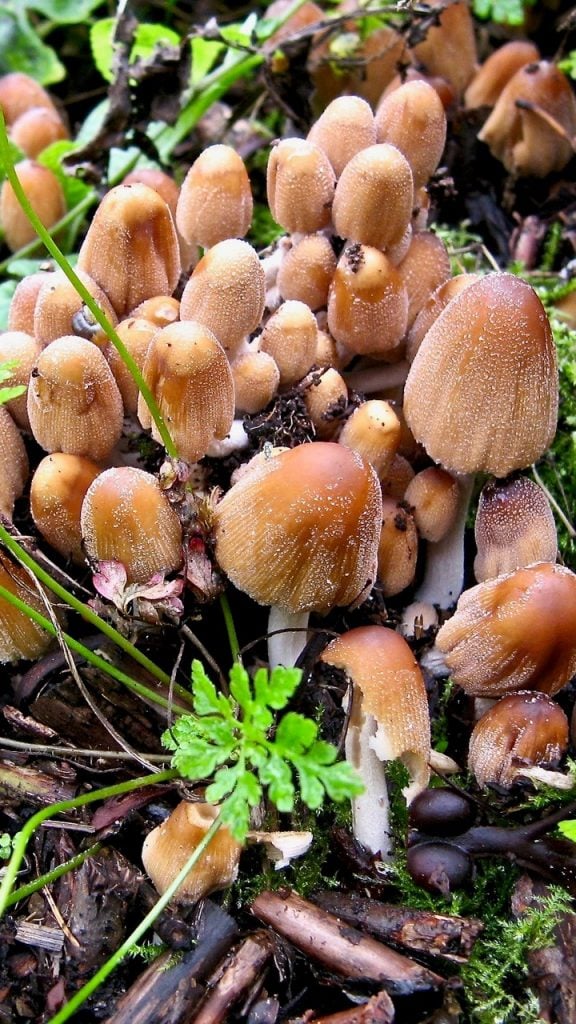
Some gentle fingertip-rummaging in the top few inches of the dahlia border, and I was back among silky pale strands, some of which were encircling and invading a recent helping of green wood chips spread there (I now try to add a layer around 5cm/2in deep at least once a year, often atop a layer of fresh seaweed). The below-ground, moist and mouldy chips – with their divine mushroom scent – soon become a feast for fungi and other microbial soil life. Those lying as a surface mulch remain pretty much dry and intact until they sink deeper over time; on warm days, they’re a favourite lair of fast-moving hunting spiders.
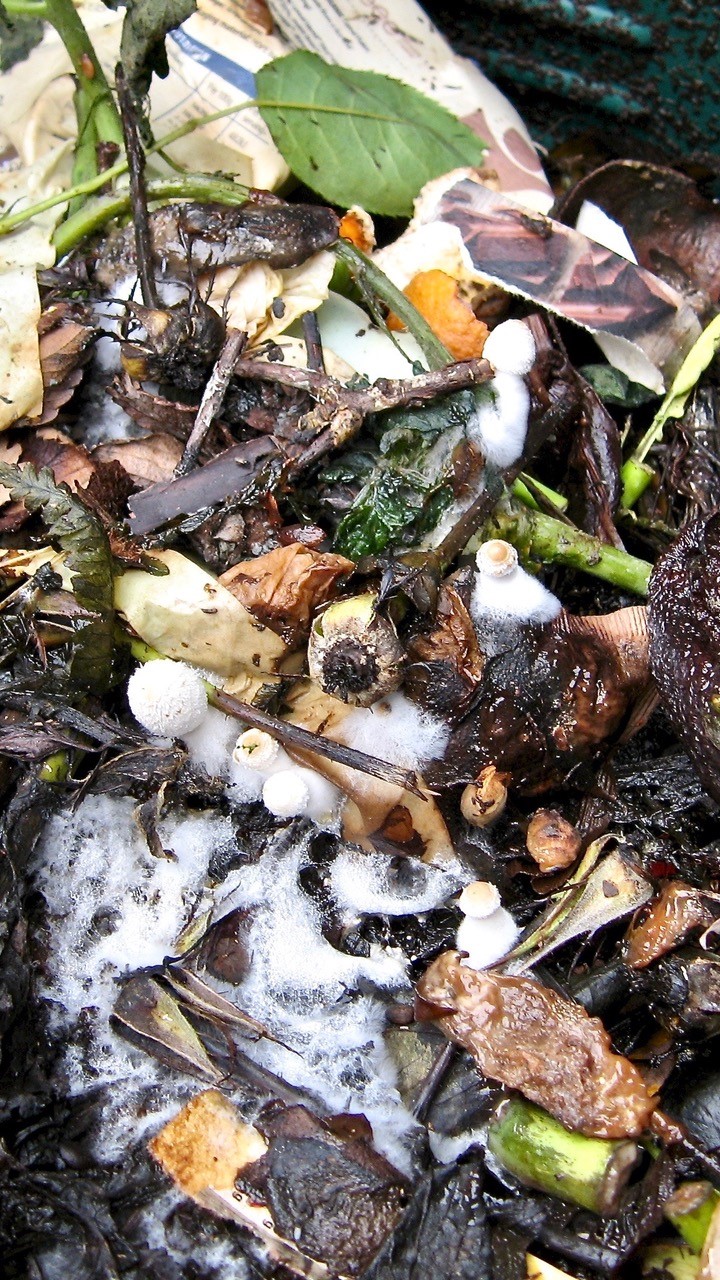
The web of mycelia threading through the soil is vast and endless; it reaches across the cultivated parts of the garden, into the wild margins, and on into the woods beyond. There is no beginning, and no end. It unites the wild with the cultivated, the big with the small, only showing itself above ground when a flush of spore-launching toadstools burst, as if by magic, from its living matrix.
Flushes usually follow a wet spell, and they’re more common in autumn – but can appear at any time of the year. Sometimes they’re almost gone before I even notice them, nestled in the shade under the dahlias’ bronze canopy, right bang up next to their juicy stems. I’ve never grown better, more zest-filled dahlias, and other plants here thrive equally well. This living, pulsing mycelial web not only helps to break down the wood chips, releasing their nutrients, it also helps to pass them, where roots and mycelia interweave, to the plants.
The delicate fungal strands pop up in other places, too. They’re woven through my leaf mould cages, playing their star part in mouldering dead leaves into dark, soil-enriching gold. They reach up from the soil into my ‘wormposting’ bins, joining forces with the mycelia that sprout now and then from the trimmings of chestnut, shiitake and oyster mushrooms. Their job here is to work alongside tiger and brandling worms and myriad other turn-it-into-compost life. That same, microbially charged wormpost sprinkles its magic back in the garden when it’s spread as compost, or when it’s added to a home-made peat-free potting compost, where it really can throw up surprises.
Recently I did a double take while checking the potted strawberries ripening in the greenhouse: the toadstool sprouting from one of the pots was a couple of inches across. The strawberry plant was perfectly healthy, and its fruits were ripening like a dream (they tasted the business, too). The toadstool was attached to a fine web of mycelia threading throughout the home-made compost in the top of the pot (I’d hazard a guess that it was the composted bracken in the mix that spurred on this bit of mushroom magic).
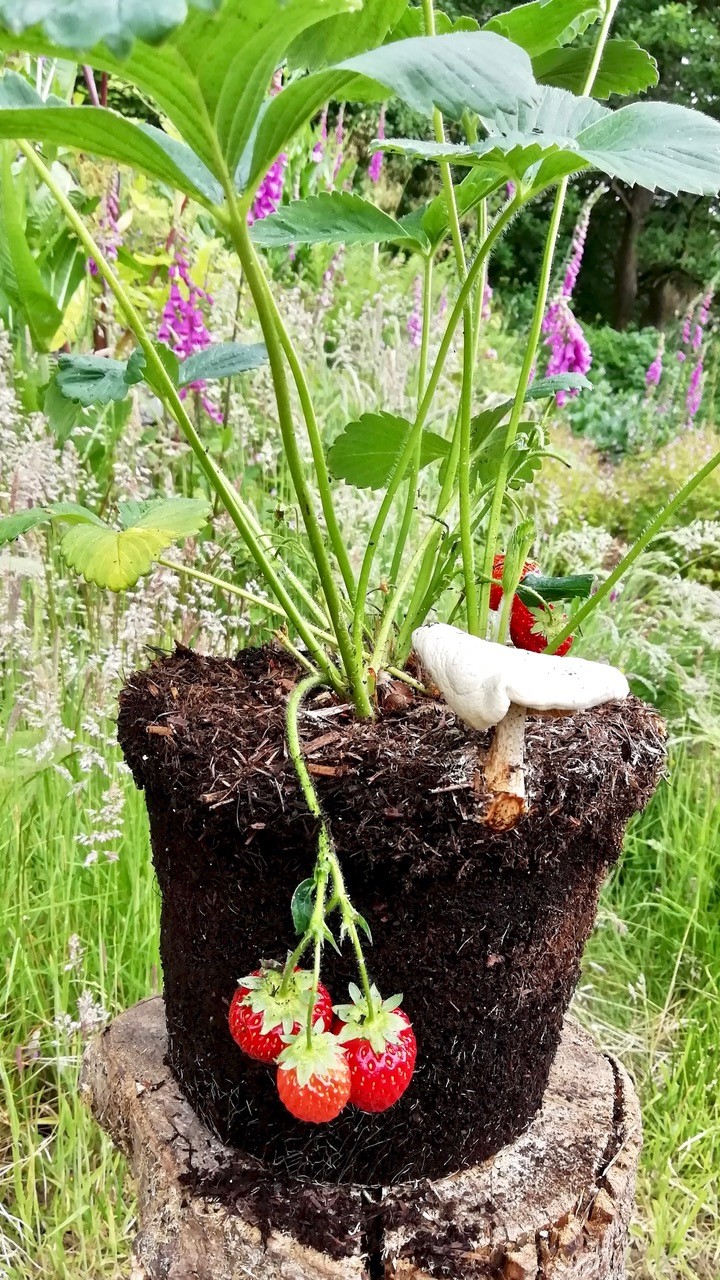
I get a similar effect when using peat-free fibre pots and biologically alive sowing or potting compost. Fungi that occur naturally in quality peat-frees made using wood fibre and bark (think SylvaGrow) will begin feasting on the recycled paper pulp that many biodegradable pots are made from, sometimes adorning them with a show of tiny, fragile, fleeting toadstools. I often find small toadstools sprouting among the roots of tomatoes and other plants potted in wood- and bark-rich mixes; they’re invariably the healthiest and most productive plants I grow.
When Suzanne Simard began her forest research, one of her early findings was that adding a handful of rich, mycologically-alive leaf litter from the forest floor to the planting holes of young conifer plantation trees – which were being grown on land that had been cleared of all its native vegetation – dramatically improved the chances of their survival and subsequent success (they struggled alone, without the company of other plants). Clearing Canada’s old-growth forests had caused the mycelial web to break down; plants effectively lost touch with the soil ecosystem and with each other. Simard’s scientific research showed that trees grown commercially for timber fare far better in the company of other plants, linked together through an unseen underground internet.
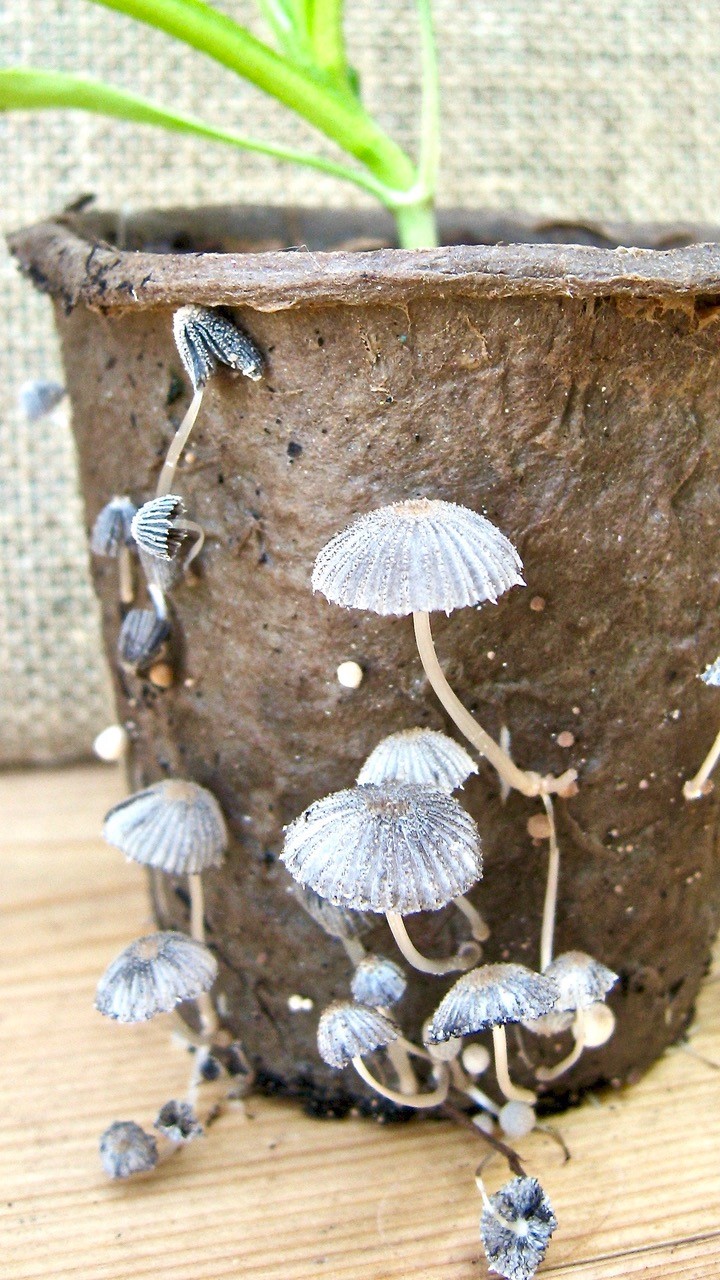
There is scant sign of any research being undertaken into how we gardeners can benefit from a deeper understanding of, and reverence for, the complex web of living connectivity beneath our feet. We know that adopting a no-dig approach, which minimises soil disturbance, allows the soil ecosystem to flourish and become a useful carbon store (green wood chips eventually become black humus). But we rarely hear about how we can actively encourage the mycological community beneath us, let alone how we might nurture it to the benefit of our plants – be they for food or sheer delight. If any area of gardening research was needed, urgently, as our natural world flounders in the grip of climate breakdown, this is it.
It’s a leap to imagine my dahlias swapping notes, via networking mycelia, with a neighbouring teasel, but the message sent by Suzanne Simard’s book is a powerful persuader, and I’m sold. It’s a gardening must-must read, and it’s time for me to stop frolicking with fungi and get back to it. Until it has me racing outside again…
Text and images © John Walker
Find John on Twitter @earthFgardener










